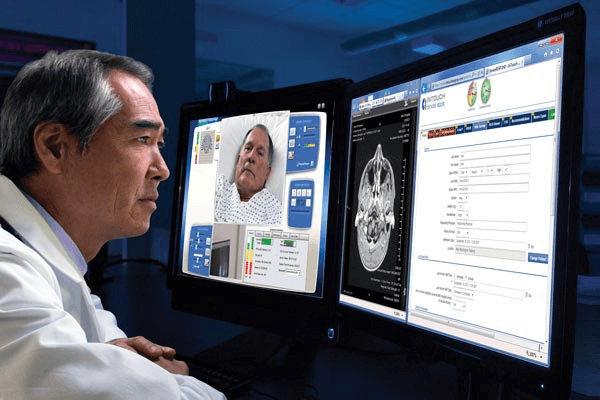Why Telemedicine?

Telemedicine is a two-way, real-time interactive communication between a patient and healthcare provider at different sites. It’s supported by audio and video equipment and integrated medical devices that empower clinicians to evaluate, diagnose and treat patients remotely.
Telemedicine can offer numerous benefits to complement traditional in-person medical care:
- Telemedicine can be particularly helpful in rural areas, where the shortage of healthcare providers had led to difficulty accessing both basic healthcare and specialty care.
- Patients can access healthcare services faster, which is driving stronger patient engagement and better outcomes.
- As the healthcare industry moves toward value-based care, experts find telehealth technologies can result in fewer hospital re-admissions, better treatment adherence, and faster recovery compared to outcomes for patients not receiving remote intervention.
- Telemedicine allows hospitals to create hub-and-spoke networks to support each other. By sharing their expertise outside their own institutions, doctors can offer incredible knowledge to their medical colleagues and those colleagues’ patients.
- Remote medical technology is an increasingly effective way to administer preventive medicine and manage chronic conditions while reducing costs.
Evidence-Based vs Symptoms-Based Telemedicine
Because the term telemedicine is often used in different ways, it’s important to understand the difference between evidence-based telemedicine and symptoms-based telemedicine.
In symptoms-based telemedicine, a clinician communicates with a patient by phone or video chat. The clinician makes their diagnosis based upon the symptoms reported by the patient, which is typically not backed up with clinical evidence.
With evidence-based telemedicine, clinicians can evaluate, diagnose and treat patients remotely using store-and-forward technology and/or real-time video conferencing. Remote healthcare providers can capture and transmit medical data to share with their peers and specialists around the corner or around the world. GlobalMed’s functionality has elevated telemedicine to this level of clinical collaboration and evidence-based treatment plans.
Ultimately telemedicine supports The Triple Aim, developed by The Institute of Health Improvement [1]. The Triple Aim works toward optimizing health system performance through better patient care, better population health outcomes and lower per capita costs.
